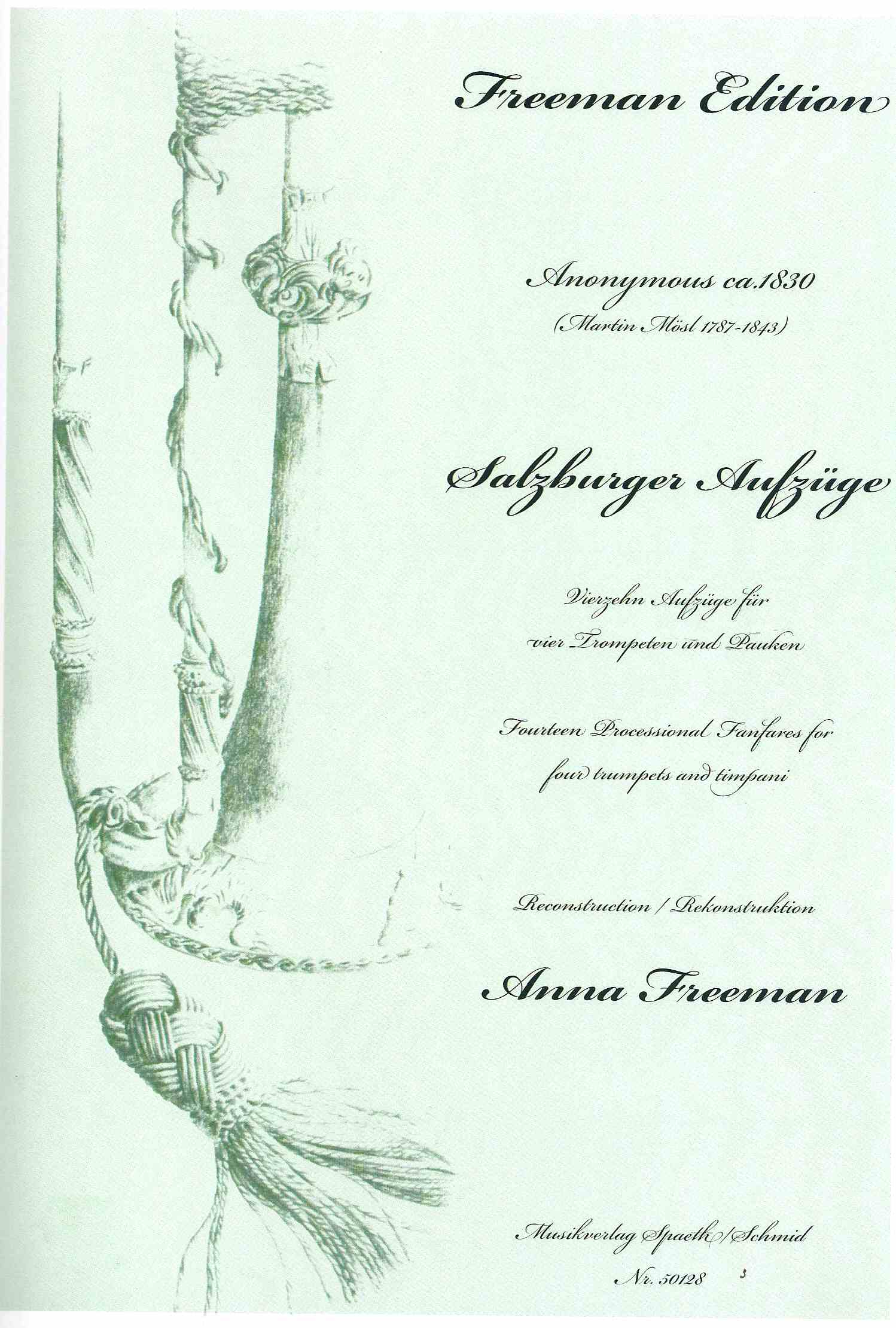
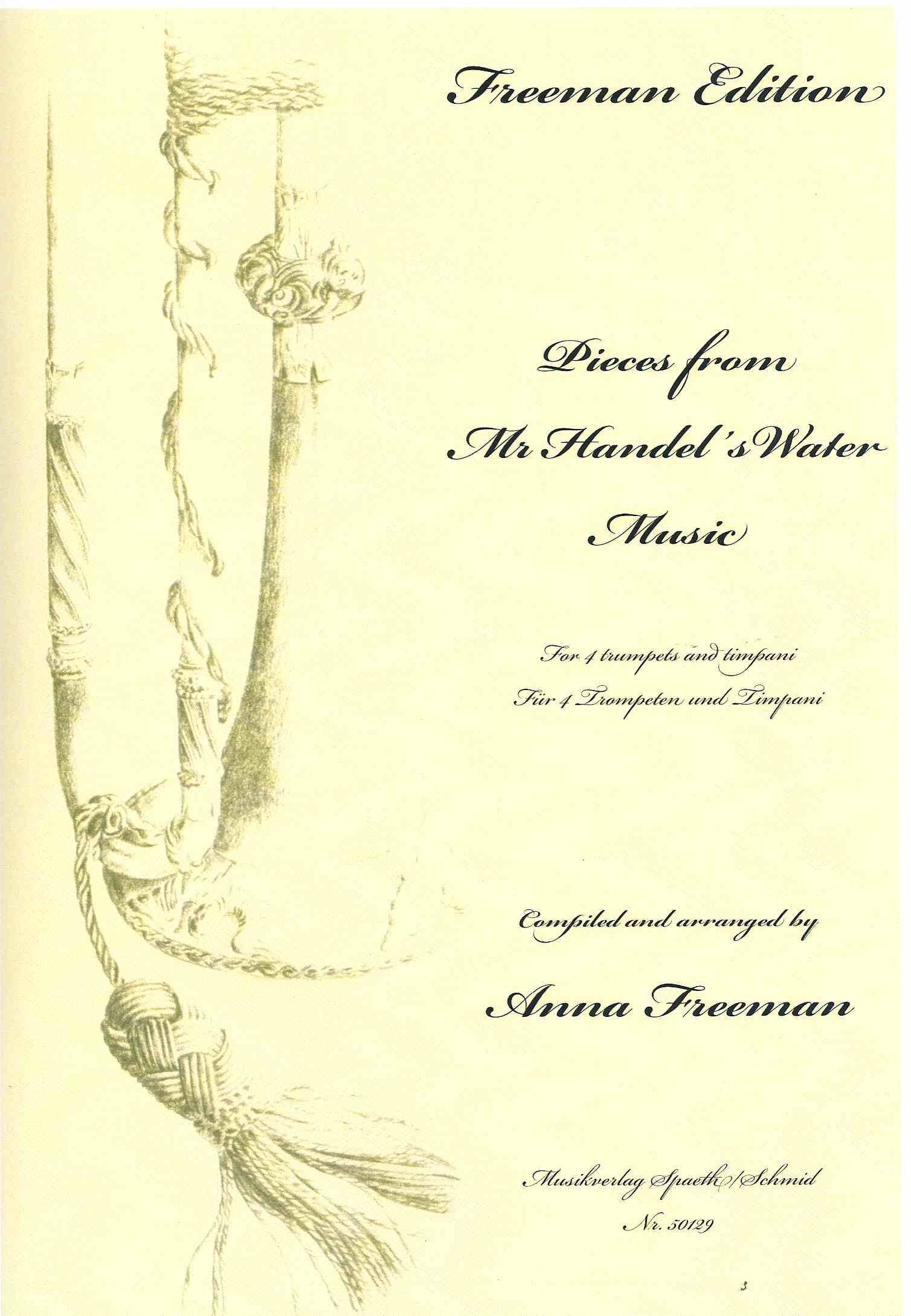
Pieces from Mr. Handel’s Water Music for 4 trumpets and timpani. Compiled and arranged by Anna Freeman. Musikverlag Spaeth/Schmid Nr. 50129, 2011.
Salzburger Aufüge 14 Processional fanfares for 4 trumpets and timpani. Reconstructed by Anna Freeman. Musikverlag Spaeth/Schmid Nr. 50128, 2011
Publisher's Website: www.spaeth-schmid.de
Anna Freeman has edited two fine performance editions, with score and individual parts, for the natural trumpet ensemble. One is an arrangement of 9 pieces selected from Handel’s Water Music and the Suite in D for Trumpet. The second is a reconstruction of early 19th century repertoire offering us a glimpse of the tail end of this long and wonderful musical tradition.
In addition to giving the trumpet ensemble an opportunity to perform the glorious Handel tunes, Freeman has presented optional timpani solos as well as an ornamented and virtuoso third trumpet line replete with florid 32nd notes ascending up to high c’’’. The individual third trumpet part has the ornamented line in a smaller font so the player can easily distinguish the basic part from the ornamented line. Generally speaking, however, the range of these tunes is modest. The first trumpet part only ascends to g’’ with an occasional a’’.
Freeman dates the Salzburg Fanfares to about 1830 and has presented them in this edition in what she believes was the original form of the pieces, that is scored for 4 natural trumpets and timpani. The creation of this edition comes with an interesting story kindly related to me by the editor herself. About 35 years ago, Freeman visiting an old barn in Upper Austria bought a box of old wet band music from a farmer for about 5 dollars. The box was put away in the attic and traveled around the globe on various home moves. A few years ago the box was first examined and the editor noticed that the top 2 trumpet parts of this music were almost completely on natural tones. After consulting with Albert Hiller and Marc Meissner, Meissner recognized that the first fanfare in an 1803 collection, Sechs kurze und leichte Aufzüge by Martin Mösl (1787-1843) was almost identical to the 5th fanfare in the Salzburg collection. The present reconstruction by Freeman is based on Salzbürger Fanfaren Nr. 535 compiled and arranged by Otto Eberhard, Salzburg, and listed by the publisher, Musikverlag Siegfried Stamberg Vienna, in 1940. That collection is scored for 2 trumpets and 2 trombones. According to Freeman’s edition notes, Eberhard arranged and composed works for brass and had embraced the idea of taking music from many different sources and popularizing them and making the music more assessable. Based on the Mösl fanfare and the fact that the two trombone parts could very easily be reworked to fit the limitations of natural trumpets, it is Freeman’s contention that the present edition scored for 4 natural trumpets and timpani was indeed the original instrumentation from which Eberhard wrote his arrangement.
This is a fascinating tale which ends with a “new” collection of 14 pieces for the natural trumpet ensemble. The music itself is very much in the tradition and is modest in range and difficulty. Two of the last fanfares have been named and Freeman has retained those names in this edition. Fanfare #12 Jagdfanfare [Hunting Fanfare] has a clear hunting horn style and fanfare #14 Huldigungsmarch [March of Homage] is the longest piece in the collection, a regal 32 measures.
The notes in both editions are in English and German. The individual parts and score are in large readable font size and on sturdy stock. These are two most welcome additions to the natural trumpet repertoire.
-- Jeffrey Nussbaum
 Brass For Beginners: A Comprehensive Brass Education for the Primary School Classroom or Private Instruction. www.brassforbeginners.com
Brass For Beginners: A Comprehensive Brass Education for the Primary School Classroom or Private Instruction. www.brassforbeginners.com




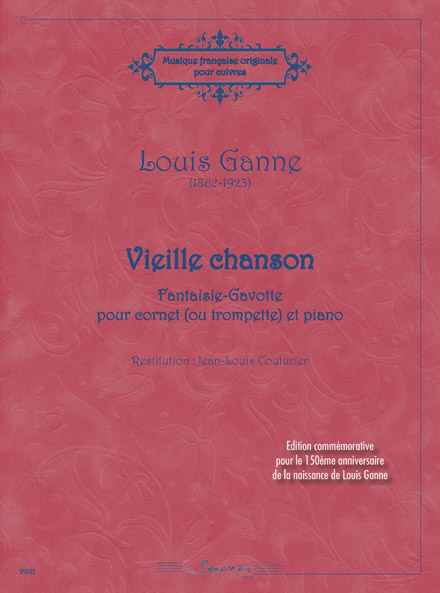
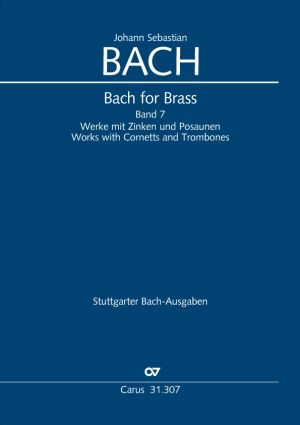 Edward H. Tarr, ed. Bach for Brass, vol. 7. Cantatas and Mass Movements with Cornetts and Trombones. Leinfelden-Echterdingen, Germany: Carus Verlag 2017.
Edward H. Tarr, ed. Bach for Brass, vol. 7. Cantatas and Mass Movements with Cornetts and Trombones. Leinfelden-Echterdingen, Germany: Carus Verlag 2017.
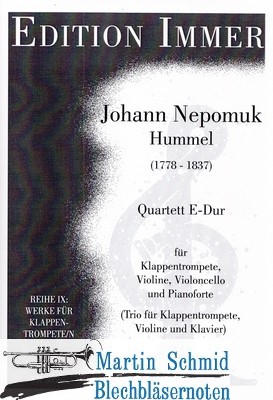
 The four trumpet scores reviewed here are all part of the “Edition Immer” series and are published by Musikverlag Martin Schmid.
The four trumpet scores reviewed here are all part of the “Edition Immer” series and are published by Musikverlag Martin Schmid.
